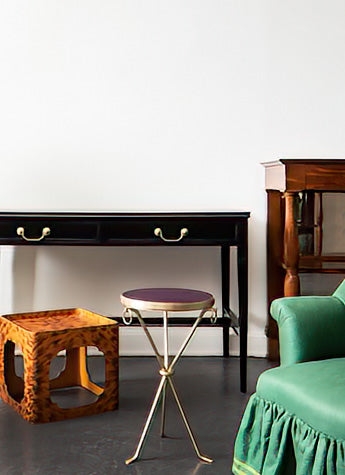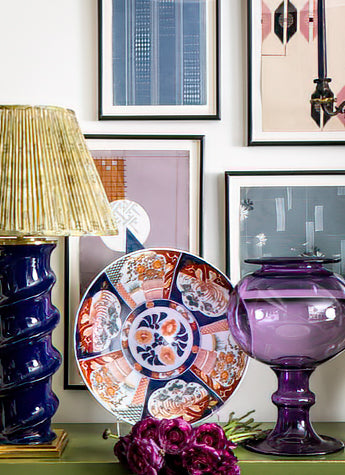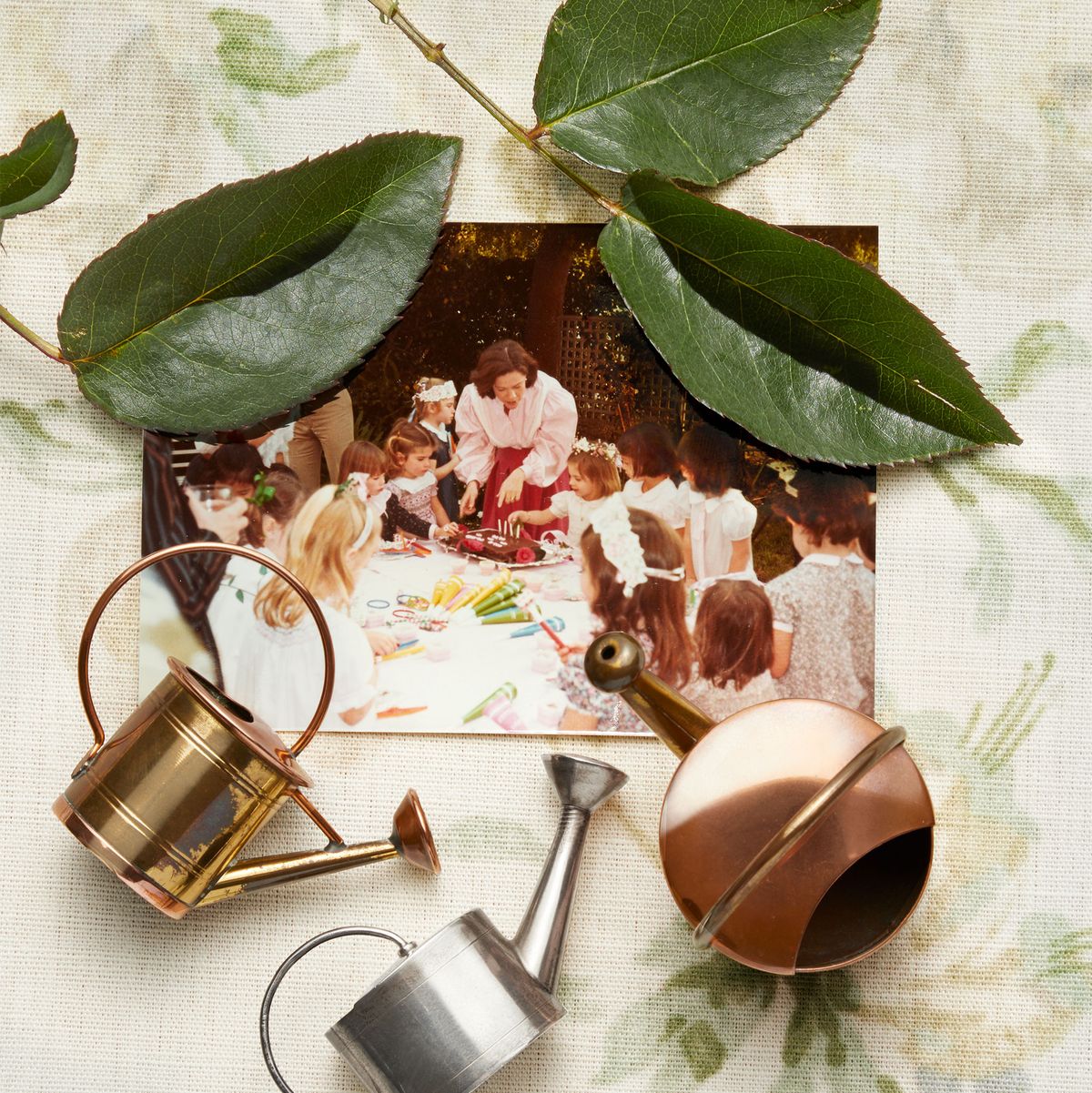A Love Letter to Suzanne Rheinstein
“My mother has always had the ability to take things to a higher level, to bring the magic,” the late design legend’s daughter reflects."
Written by Kate Rheinstein Brodsky & Styled by Bebe Howorth | [Read the Original Article]
Mine was not the typical 1980s childhood. Being the daughter of Suzanne Rheinstein, is it any wonder? While other children played in soccer leagues on weekends, I was taken to San Juan Capistrano, California, to see antiquarian Gep Durenberger and the Decorative Arts Study Center. I had been to cocktails at Dawnridge, Tony Duquette’s house, by the time I was 10. I carpeted my dollhouse (a Georgian townhouse, naturally) in fabric samples pilfered from my mother’s desk. My childhood bedroom was pale pink and sage, with cream quatrefoil-painted floors and glazed-chintz balloon shades—a glorious Colefax and Fowler fever dream. Self-expression was encouraged, but posters and collages could be hung only on the inside of the closet door. I was an only child of older parents and, luckily, I was perfectly content to be an anomaly.
We did “Interesting Things” on trips. School breaks were spent touring important gardens, house museums, and antiques stores. I knew to ask politely which chair was OK to sit in, and from the time I learned to read, I carried a book with me wherever I went. My mother consistently worked hard to engage me wherever we traveled. I remember a trip when I was about 12 to Paris, where my mother found someone to give us a walking architectural tour of ancien régime Paris. She prefaced this by handing me an abridged volume of the letters of Madame de Sévigné and telling me I needed to read it as preparation.

Suzanne’s new book, A Welcoming Elegance (Rizzoli, March 2023), at far left; rooms from a lifetime of designing homes, including several featured in ELLE DECOR; a vintage photograph of Suzanne and Kate. Photo by Massimo Gammacurta.
Sometimes it felt like Suzanne thought she could single-handedly convince Europe that not all Americans were tacky. We were always well dressed. My mother wore slacks and a cashmere sweater with a scarf and lots of 19th-century gold jewelry. My father, Fred, habitually sported a checked shirt, a blazer, and a bow tie, and, unfailingly, an ancient khaki trench coat. I would be dutifully turned out in smocked dresses and pale-blue tweed coats with velvet collars, tights, and the dreaded button shoes.
Antiques fairs, flea markets, and small shops were a staple of my childhood. Suzanne’s clever way of making these outings complaint-free was to encourage me to form my own collection. I am not sure how we hit upon miniature watering cans, but we did. I would spend hours going through the aisles, scouring for tiny watering cans. As I outgrew miniatures, Suzanne pulled me in by letting me shop alongside her, and I would discover a little aqua blown-glass vase at a market in London or 19th-century fashion prints at a Paris flea market.
My mother has always had the ability to take things to a higher level, to bring the magic. This is evident in the parties she has been throwing for decades, gathering disparate people together in a delightful way. Most famously her magic is palpable in the rooms she puts together. For me, that magic was ever-present at her shop. I was eight when my mother opened Hollyhock in Los Angeles, her antiques and furnishings store that quickly became iconic. From the start, I loved going there, enamored of the plump cushions, the fragrance of Kenneth Turner candles, the lush colors, even the crisp, glossy dark green of her wrapping paper, tied up with ivory grosgrain ribbon. After school, the carpool or bus dropped me at the shop, and I would sit in the back doing my homework or placing labels on postcards. When I was a little older, I worked there in the summer and on school breaks wrapping presents and Windexing endless amounts of William Yeoward crystal under the watchful eye of Joe Nye, the famously acerbic manager of Hollyhock who went on to become a prominent decorator in his own right, as well as a very dear friend.

Suzanne Rheinstein serves cake at an early birthday party for her daughter, Kate Rheinstein Brodsky. The miniature watering cans are from Kate’s personal collection. Fabric by Suzanne Rheinstein for Lee Jofa. Photo by Massimo Gammacurta.
Somewhere along the way I fell in love with retail. Specifically, retail the way my mother did it: mixing antiques with new furniture and creating vignettes and moments in her shop that showed how a piece might look at home. She loved glorifying the quirky, combining the rustic with the refined and at all times featuring an inordinate number of little tables. Her other career, interior design (which happened contemporaneously and for which she is perhaps even more celebrated), gave her great insight into what was lacking in the market. Anything she wanted that she couldn’t find, she simply had made. That ensured Hollyhock always had a loyal decorator clientele.
Watching my mother create beautiful rooms never tempted me into design, but watching her keep shop had me following her footsteps right into retail. All the stores visited, books read, trips taken, and gardens wandered with my mother as a child left an imprint on me and gave me a point of view that I try to bring to my own shop, KRB. I aim for unique pieces—both antique and new—informed by history, brought together in unusual ways, hopefully with curiosity and a touch of humor—in so many ways, a love letter to my mother.


